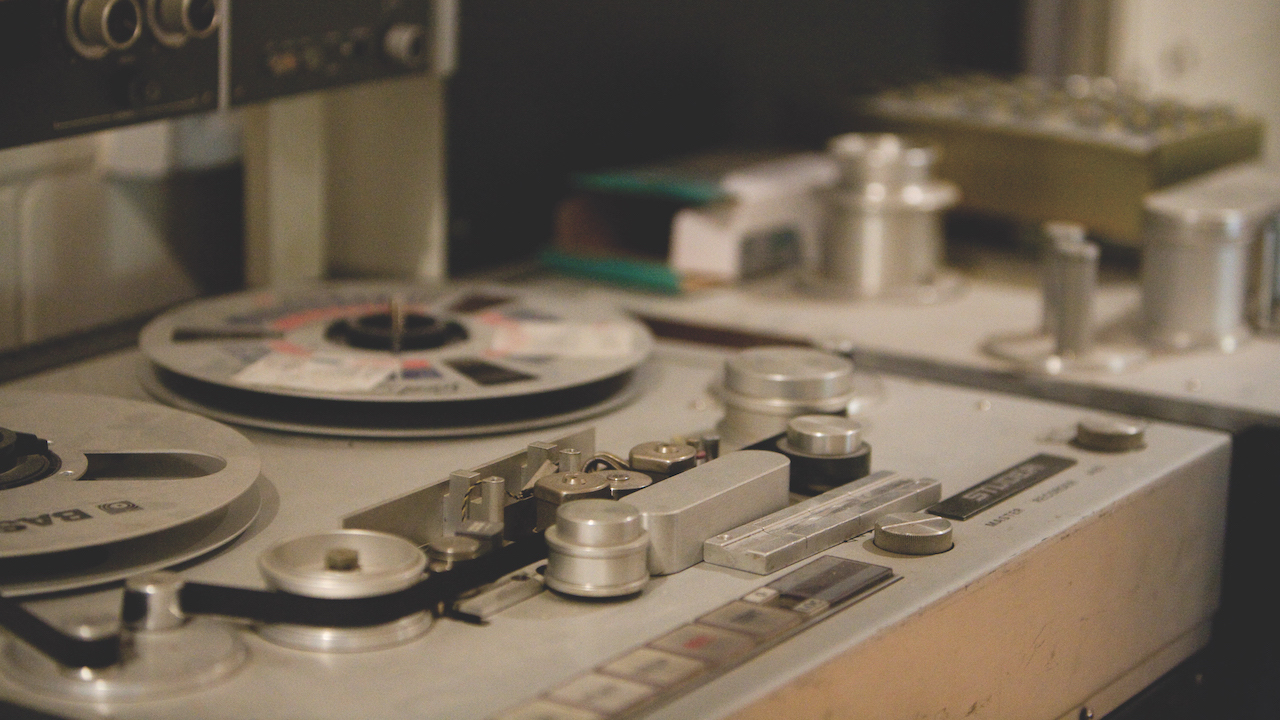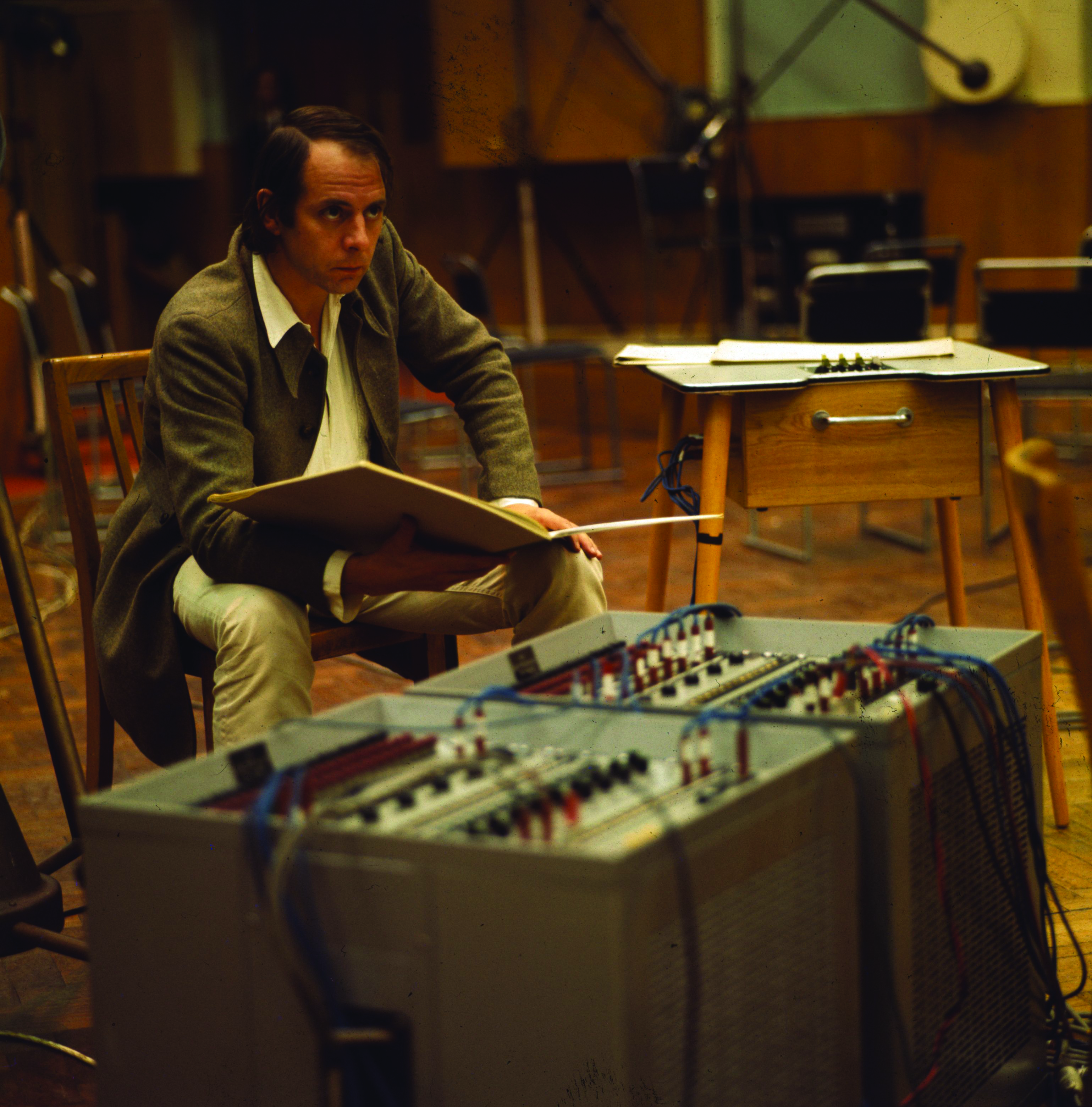
The use of reverse audio in mainstream music really took off in the mid to late 1960s. However, to find the roots of this development we have to go back a bit further and consider a couple of significant changes.
The first of these was the arrival of magnetic recording tape. This new medium and accompanying reel-to-reel machines revolutionised audio recording, and first found widespread use in broadcast and audio production in the 1940s and 1950s.
Significantly, the open deck design meant that by running the tape to the end and taking the right hand spool, turning it over and reloading it onto the left-hand side of the machine, you could play your whole recording backwards. Initially, this would have been viewed as a strange and unusable byproduct, but that was all about to change.
The second catalyst was a shift in attitudes to musical composition and in particular a progressive electronic music form known as musique concrète. Spearheaded by French composer Pierre Schaeffer, this involved a move away from scoring written notes for instrumentalists to play. Instead composition used snippets of recorded audio or ‘concrete sounds’, thus placing the composer in control of not only the notes but also the final sound.

Combined with the newly available tape-recording technology, musique concrète was able to use a multitude of tape techniques including micromontage (joining together small snippets), looping, pitch variation and of course reverse audio.
The movement attracted a bunch of avant-garde composers, including one Karlheinz Stockhausen. He then took these ideas back to Germany and the studio of German national broadcaster (WDR) where he began to combine electronic synthesis, musique concrète and other compositional techniques.
Stockhausen gained considerable traction in the ’50s and ’60s, and became a popular reference point for both jazz and mainstream artists like Miles Davis, Frank Zappa and The Beatles, all of whom would employ tape manipulation techniques at some point. Nevertheless, the first use of reverse audio in popular music can actually be traced to a 1959 release called Car Trouble by The Eligibles.
The band were a four-piece vocal harmony group and the track couldn’t be any less avant garde. However, it reverses a couple of sections of spoken vocal to hide the retort from a teenager’s angry parent. This inadvertently created a production technique called backmasking, which has since been used in all manner of music genres. It didn’t take long for reverse audio of musical sounds rather than vocals to also get used, and maybe unsurprisingly it was the BBC’s very own Radiophonic Workshop who delivered the goods with the groundbreaking Dr Who theme.
By the mid 1960s, the concept of reverse audio, although established, hadn’t become mainstream. However, as The Beatles began to flex their creative muscles, it was the Revolver sessions, including the B-side Rain that kicked things off.
Using the technique for both vocals and instrumentation, they had both the opportunity and audience to put the technique centre stage, and the tracks Tomorrow Never Knows and I’m Only Sleeping are perfect examples of how you can use backwards sounds musically without it becoming too gimmicky.
Once established, the technique fitted in well with the psychedelic music of the late 1960s and although The Beatles continued to use it on the Sgt Pepper album, other artists such as Jimi Hendrix and Pink Floyd jumped on board. A good example is Are You Experienced? by the Jimi Hendrix Experience, which includes backwards drums and guitars.
Around this time, people also began experimenting with backwards effects including reverb, and this can be heard on the 1967 track Ten Little Indians by the Yardbirds. By all accounts, guitarist Jimmy Page was looking at ways to improve a pretty lacklustre song, and suggested reversing the echo on the brass. This resulted in a noticeable pre-effect which you can clearly hear at certain points in the track.
Over the following decades, more flexible multitrack recording allowed for a more finessed approach to backwards audio, and the effect simply became part of the available palette of sounds. Check out, for example, Yes’s Roundabout (1971), Pink Floyd’s Speak To Me and its segue into Breathe (1973) and Queen’s Another One Bites The Dust (1980), all of which use backwards musical elements. Or for vocal backmasking, try the outro to Prince’s Darling Nikki (1984) or Pink Floyd’s Empty Spaces (1979).
Every now and then the effect returns for a centre-stage appearance, such as the guitar solo in REM’s What’s The Frequency, Kenneth (1994) or the reverse lead vocal in Missy Elliott’s Work It (2002). Meanwhile reverse reverb is now a staple effect that you’ll find in all manner of genres from mainstream rock (Depeche Mode’s Personal Jesus [1990]) to indie (My Bloody Valentine’s Loveless album), contemporary pop (Billie Eilish’s When The Party’s Over) and numerous dance and club tracks.







